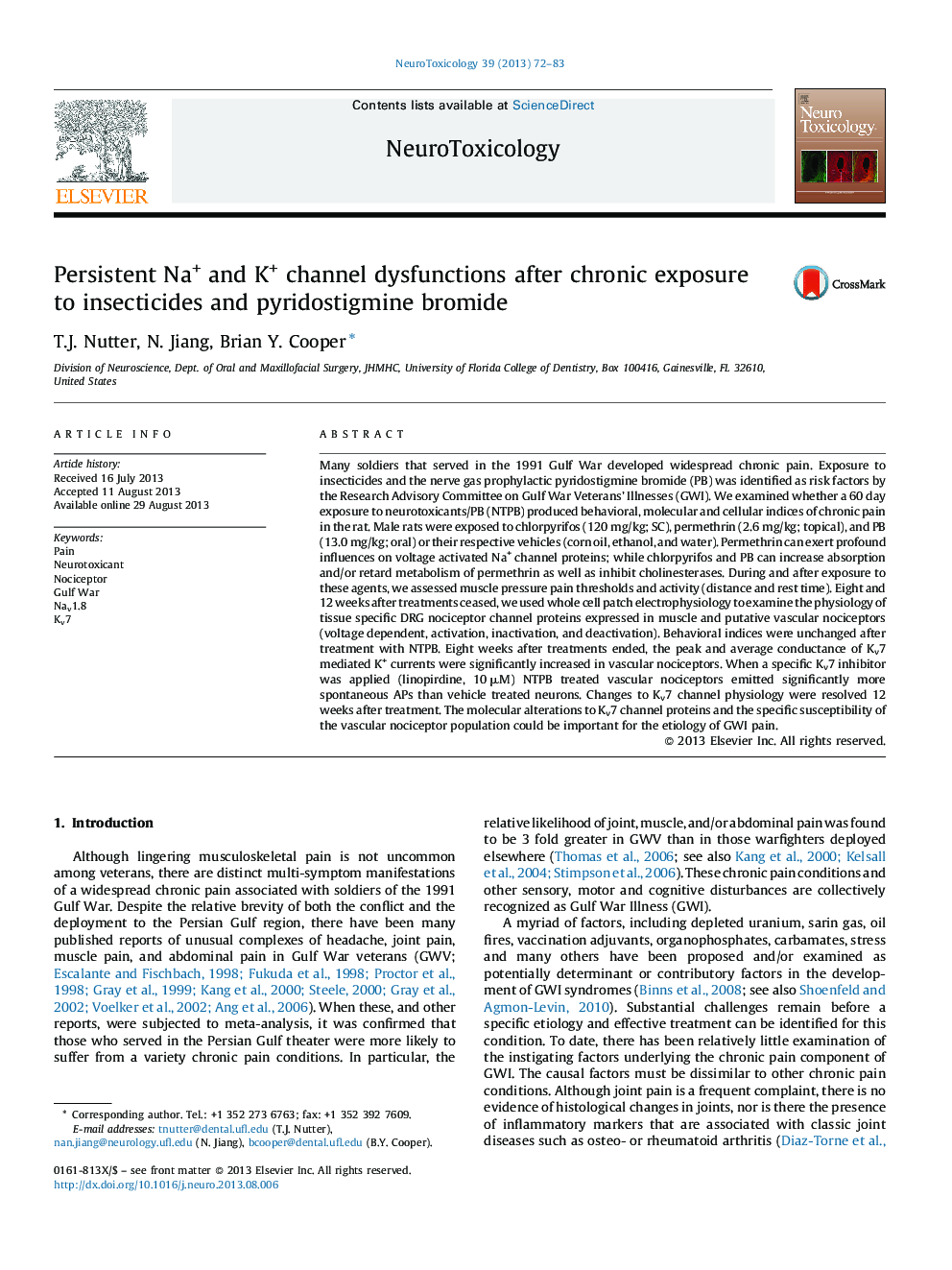| Article ID | Journal | Published Year | Pages | File Type |
|---|---|---|---|---|
| 2589707 | NeuroToxicology | 2013 | 12 Pages |
•Rats were treated for 60 days with permethrin, chlorpyrifos and pyridostigmine bromide.•Eight weeks after treatment ceased, there were no behavioral indices of pain.•Eight weeks after treatment ceased there was slowed decay kinetics of Nav1.8.•Eight weeks after treatment ceased, Kv7 amplitude and conductance were increased in vascular but not muscle nociceptors.•Eight weeks after treatment ceased, vascular nociceptors exhibited increased spontaneous activity.
Many soldiers that served in the 1991 Gulf War developed widespread chronic pain. Exposure to insecticides and the nerve gas prophylactic pyridostigmine bromide (PB) was identified as risk factors by the Research Advisory Committee on Gulf War Veterans’ Illnesses (GWI). We examined whether a 60 day exposure to neurotoxicants/PB (NTPB) produced behavioral, molecular and cellular indices of chronic pain in the rat. Male rats were exposed to chlorpyrifos (120 mg/kg; SC), permethrin (2.6 mg/kg; topical), and PB (13.0 mg/kg; oral) or their respective vehicles (corn oil, ethanol, and water). Permethrin can exert profound influences on voltage activated Na+ channel proteins; while chlorpyrifos and PB can increase absorption and/or retard metabolism of permethrin as well as inhibit cholinesterases. During and after exposure to these agents, we assessed muscle pressure pain thresholds and activity (distance and rest time). Eight and 12 weeks after treatments ceased, we used whole cell patch electrophysiology to examine the physiology of tissue specific DRG nociceptor channel proteins expressed in muscle and putative vascular nociceptors (voltage dependent, activation, inactivation, and deactivation). Behavioral indices were unchanged after treatment with NTPB. Eight weeks after treatments ended, the peak and average conductance of Kv7 mediated K+ currents were significantly increased in vascular nociceptors. When a specific Kv7 inhibitor was applied (linopirdine, 10 μM) NTPB treated vascular nociceptors emitted significantly more spontaneous APs than vehicle treated neurons. Changes to Kv7 channel physiology were resolved 12 weeks after treatment. The molecular alterations to Kv7 channel proteins and the specific susceptibility of the vascular nociceptor population could be important for the etiology of GWI pain.
